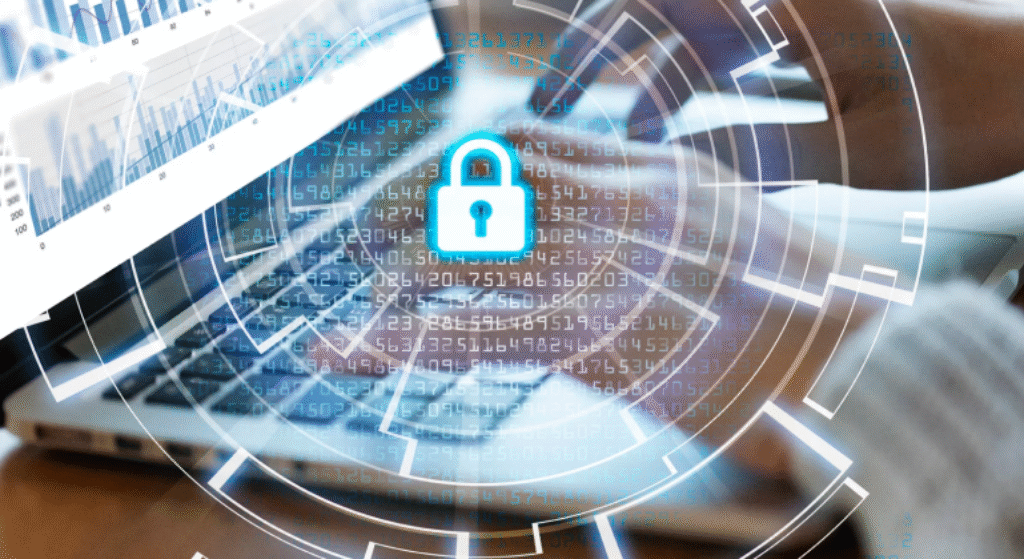
In 2025, the cost of protection against cybercrime reached a staggering $ 10.5 trillion USD. Since 2015, this amount has increased by $7 trillion.
As technology continues to advance, cyberattacks are becoming increasingly sophisticated and frequent, leading experts to predict a further escalation in these figures.
Notably, cyber threats reached an unprecedented peak during the COVID-19 pandemic, witnessing a surge of over 600%.
Consequently, organizations, regardless of their size, must adopt a vigilant stance against cyberattacks and strategize on establishing a comprehensive framework for safeguarding their digital infrastructure.
5 Strategies To Build A Cybersecurity Ecosystem

Below are five recommended strategies to adopt and build a cybersecurity ecosystem, fortify your organization’s security stance, and guarantee optimal enterprise protection:
1. Perform A Comprehensive Evaluation Of Cybersecurity Risks:
This evaluation aims to recognize the cyber threats faced by the organization, determine its crucial assets and vulnerabilities, and assess the potential consequences of these threats.
Companies can achieve this by engaging in discussions with relevant individuals, reviewing existing records, and analyzing data related to cybersecurity incidents.
Once the risks have been pinpointed, they can be ranked in order of priority and managed accordingly within the cybersecurity plan.
For instance, protecting personal and sensitive information is the first priority of organizations. Companies can easily implement strong password practices across the board by using a reliable password manager.
2. Define Your Strategic Objectives Clearly:
Take the time to thoroughly analyze the problem you aim to address. Begin by clearly understanding your organization’s underlying purpose for implementing cybersecurity measures. Remember, there is no universal strategy that perfectly fits every situation.
However, you can consider options like maintaining business continuity, safeguarding your brand reputation, complying with regulations, and facilitating business growth.
The specific context of your business should drive your decision. You can establish overarching goals that cascade down and yield meaningful results by aligning key business figures, such as board members, executives, and cybersecurity leaders, with a shared purpose.
Whenever you come across a challenge that contradicts these objectives, it becomes necessary to initiate a transformation. Start by articulating your high-level aspirations to ensure that cybersecurity genuinely becomes a catalyst for your business strategy.
3. Evaluate Solutions:
Numerous security options are available on the market, each presenting its own advantages and limitations.
When organizations opt to build an in-house security system, it becomes crucial to dedicate ample time to thorough exploration to identify solutions that effectively balance cost efficiency and reliable support.
For businesses lacking internal resources or expertise, it is advisable to consider entrusting this task to a reputable third-party IT provider.
4. Execute Solutions:
Once all the necessary preparations have been made, companies can execute their selected solutions.
It may be advantageous to establish Microsoft Intune as the initial step, followed by utilizing the Mobile Device Management (MDM) capabilities to deploy additional services and solutions.
5. Assess And Evaluate The Cybersecurity Measures:
Following the deployment of cybersecurity measures, it is essential to regularly assess and evaluate them. This practice ensures the ongoing effectiveness and longevity of the implemented safeguards.
Various approaches exist for overseeing and evaluating strategies to safeguard against cyber threats.
A few widely used techniques encompass:
- Identification of vulnerabilities: Utilize automated tools to thoroughly examine computer systems and networks for potential weaknesses or susceptibilities.
- Ethical hacking: Engaging certified experts to conduct penetration tests, probing the effectiveness of cybersecurity defenses by attempting to gain unauthorized access to computer systems and data.
- Audit of security measures: Assessing the efficacy of controls and procedures implemented for cybersecurity.
- Staff education: Regularly providing employees with training sessions focused on enhancing their awareness of cybersecurity practices.
Common Challenges Faced While Building A Cybersecurity Ecosystem

Most businesses today agree that having effective cybersecurity is essential. Moreover, it is necessary to build security awareness, and there are numerous challenges that must be faced in the process. Here are some of the common challenges that have been mentioned.
Lack Of Understanding & Awareness
One of the biggest challenges in establishing a security culture is the lack of understanding and awareness among employees about cybersecurity risks. People are often unaware of how their actions can impact the company’s security.
They often click on phishing links, share sensitive information, and use weak passwords without any proper precautions.
The nature of cybersecurity is becoming increasingly complex, and it remains challenging for employees to understand the importance of the issue beyond the IT department.
Increased Use Of AI
Machine learning and AI offer significant advantages in detecting and responding to cyber threats. Their practices are also improving, and it is becoming increasingly challenging to detect these things.
Businesses need skilled professionals who will understand both AI and cybersecurity. However, attackers are exploiting the vulnerabilities of AI, and there is a risk of false positives during threat detection.
Moreover, relying too heavily on AI can lead to complacency, and businesses often overlook the essential aspects of cybersecurity.
Building A Culture Of Security
Developing a cybersecurity culture within an organization is perhaps the most challenging. People often think that it is completely the IT department’s responsibility and not a shared value.
This often causes a lack of commitment and engagement in security practices. Moreover, they often exhibit resistance to change, and budget constraints are frequently present.
Protect Your Organization
Many companies struggle to comprehend the growing issue of cybersecurity and fail to make the necessary adjustments.
The emergence of cyber-related deficiencies and “unseen areas” is ongoing, primarily due to businesses evolving to maintain their competitiveness.
Unless a methodical and careful strategy is employed to coordinate security measures throughout the entire business network, cyber initiatives will persist in their ineffectiveness and minimal influence.
To advance, cybersecurity executives must collaborate with key stakeholders to understand and coordinate efforts that align with specific business needs.
By incorporating established methodologies, cybersecurity initiatives can systematically and consistently gain a deeper understanding of the business environment, thereby enhancing situational awareness.
Leaders can increase their likelihood of establishing a successful and streamlined operational framework that fosters the appropriate capabilities and unity among diverse teams by adopting a mindset of a “shared mission.”
Read Also:






